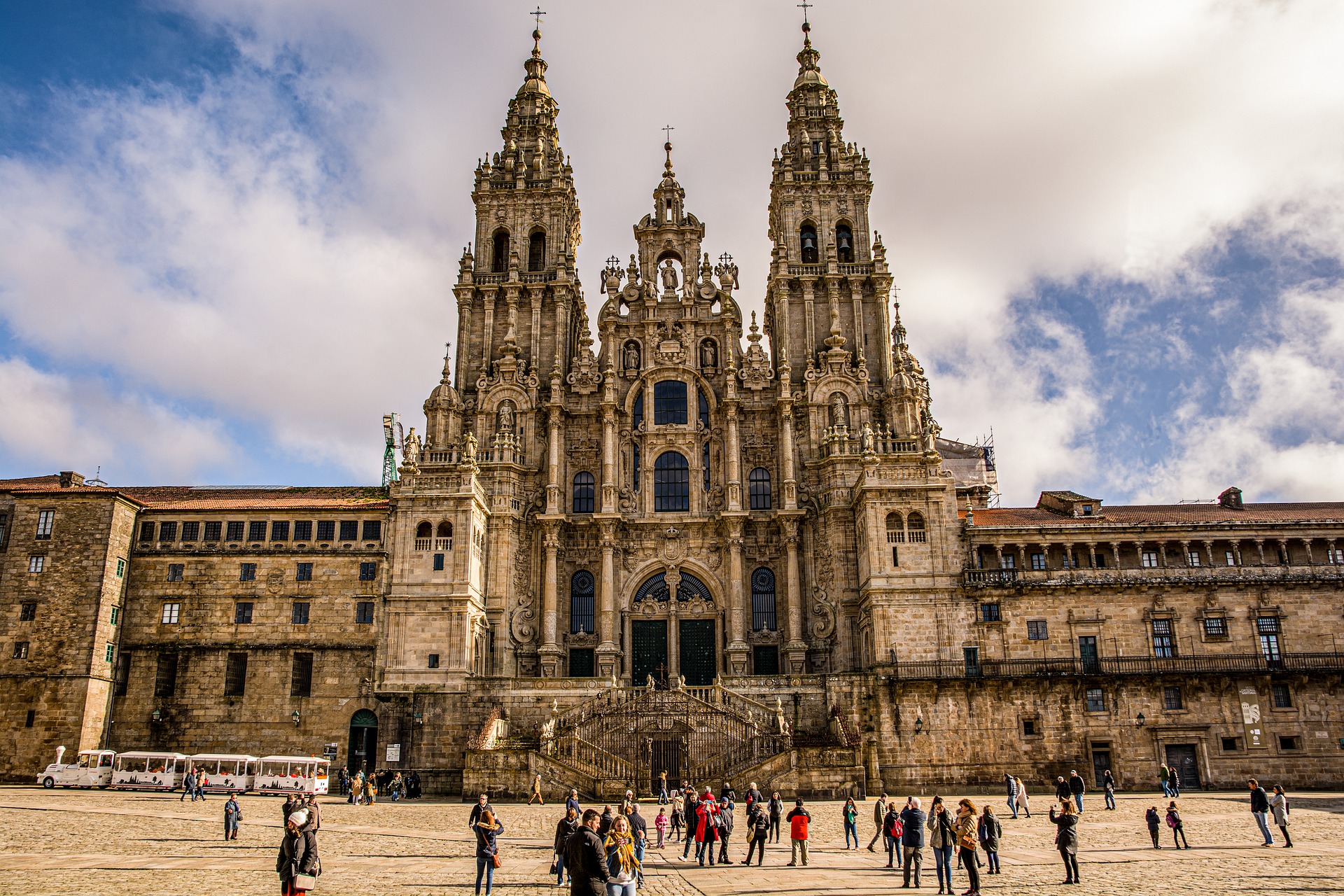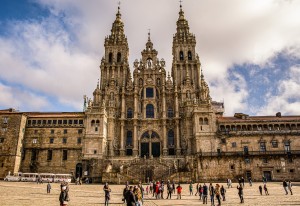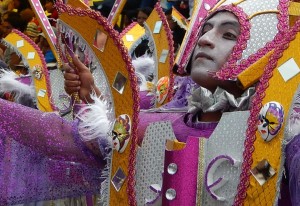A little less than two years ago, a well-known website surveyed all its readers to find out which were the most charming squares in Europe. Thus, the famous Plaza del Obradoiro was among the top 15, and no wonder!
On the website, voters referred to the views of the cathedral, the other buildings that make up the square but also the atmosphere in the same, always full of pilgrims and visitors.
And we could not agree more with this statement, but we want to put in value each and every one of the squares that make up the 4 facades of the cathedral.
Obradoiro Square
This square owes its name to the stonemasons’ workshops that worked on the construction of the cathedral’s façade and which were located here.
It is the nerve centre of the city and the destination of all the routes of the Pilgrims’ Route to Santiago de Compostela. Hundreds of people flock here every day to marvel at all the architectural styles on display.
In addition to the façade of the cathedral, the square is enclosed by the Hostal de los Reyes Católicos, the Colexio de San Xerome (university rectorate), and the Pazo de Raxoi, which is the current Town Hall of Santiago.
Here you can find, therefore, the four symbols of the life of the city: religion, university life, administration and hospitality to the traveller/pilgrim.
Platerías Square
This square is named after the craftsmen who work here.
This square can be recognised by the fountain (dating from 1829) and, on the steps, the Clock Tower, also known as La Berenguela. From this square you can also see the only Romanesque-style façade of the Cathedral.
Surrounding it you will see the Cabildo house and what is now the Pilgrimage Museum, which was once the Bank of Spain.
Azabachería Square or Inmaculada Square
You will pass an alleyway where you may come across a musician delighting you due to its great acoustics, and you will reach the Plaza de Azabachería. Just on the opposite side of Platerías, you will find this square, which owes its name to the azabacheros’ workshops.
It is framed between the north façade of the cathedral and the monastery of San Martín Pinario.
Today, the façade of the cathedral that presides over this square has Baroque and Neoclassical traces, as it had to be reformed in the 18th century.
Quintana Square
Last but not least, we have the Plaza de la Quintana.
Its name refers, in medieval terminology, to the place of transit. A public space.
This square is divided into two levels. The lower part, Quintana de Mortos, refers to the place that was, until 1780, a cemetery. The upper part, on the other hand, is Quintana de Vivos.
From this square you can see the Clock Tower (Berenguela). As a curiosity, this clock has only one hand, as the hours are marked by the bells. This tower also houses the largest bell in the Cathedral, weighing more than 6kg.
This square closes with the Casa de Parra, the Monastery of San Paio and the Casa da Conga.
4 magical places that you must visit in Santiago de Compostela. Which one has caught your attention the most?















